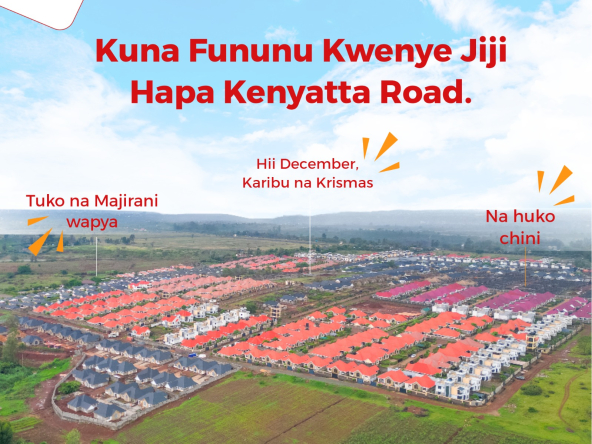Nairobi’s real estate boom is pushing boundaries—quite literally. Once dismissed as unbuildable, wetlands in Nairobi are now at the center of an ambitious transformation. From the sprawling plains of Ruai to the low-lying zones of Embakasi and parts of Mwiki, investors are pouring money into wetland development in Nairobi, a trend driven by urban expansion, limited dry land, and speculative opportunities.
But beneath this rush lies a complex story: legal battles, environmental risks, drainage engineering challenges, and a fragile urban ecosystem. As Nairobi’s population surpasses 5.5 million residents (KNBS, 2023), this land rush raises key questions about legality, sustainability, and the future of urban development.
Why Wetlands? The Economics of Unlikely Real Estate Hotspots
High Demand, Low Supply
As prime land in Nairobi’s established neighborhoods becomes unaffordable or unavailable, developers are turning to marginal areas—wetlands included. The average cost of a 50×100 plot in Kilimani now exceeds KES 30 million, while similar-size plots in Embakasi or Ruai wetlands can go for KES 900,000–2.5 million, depending on infrastructure.
This price disparity attracts both large-scale developers and individual buyers hoping to build at a lower cost, despite the known risks.
Infrastructure Expansion Encouraging Development
Areas like Ruai and Embakasi are not isolated swamplands anymore. They are intersected by major highways (Eastern Bypass), benefit from water projects like the Nairobi Bulk Water Supply Project, and are increasingly served by sewerage systems and public transport.
The Nairobi Metropolitan Services and County Government have extended drainage and road services to parts of these low-lying zones, making them more habitable and attractive to developers.
The Engineering Challenge: Building on Water
Developing wetlands isn’t as simple as clearing land and laying foundation. It involves specialized construction techniques and drainage design.
Drainage Engineering Techniques in Use
| Technique | Purpose | Cost Implication |
|---|---|---|
| Soil stabilization (e.g., lime or cement mixing) | Strengthens soft ground | Moderate |
| Piling (driven or bored) | Supports structures on soft ground | High (KES 800k–1.5M/plot) |
| Gabion walls and culverts | Prevents flooding and erosion | Moderate |
| Raised foundations | Prevents water ingress into buildings | Moderate to High |
“You can build anywhere, even in a swamp—if you have the right drainage plan and budget,” says James Odhiambo, a civil engineer working in Kamulu.
Examples of Wetland Conversions
- Ruai: Once dominated by papyrus and seasonal flooding, parts of Ruai now host gated communities and apartments with elevated walkways and flood channels.
- Embakasi: Known for periodic flash floods, the area has seen growth in mid-rise buildings with raised foundations and integrated stormwater systems.
Read Also: Land Banking or Estate Living: Where Should Diasporans Put Their Dollars?
Legal Land Issues in Kenya’s Wetlands
While the boom in wetland development in Nairobi has made land ownership appear more accessible, it comes with serious legal and environmental implications.
Understanding Land Tenure
Much of the land in wetlands:
- Falls under riparian or public utility classification
- Is governed by NEMA regulations and county zoning laws
- May lack formal title deeds or have dubious ownership histories
In 2022, NEMA revoked over 220 building permits issued for developments near wetlands in Nairobi, citing environmental degradation and legal violations.
Key Legal Risks in Wetland Construction
| Risk Type | Description | Example |
|---|---|---|
| Title revocation | If land is designated as riparian or public | Parts of Nairobi River banks |
| Building demolitions | Unauthorized or non-compliant structures are targeted | Kariobangi demolitions (2020) |
| Fines and legal injunctions | For violating NEMA or Water Act provisions | Fines of up to KES 2 million |
“Most buyers don’t realize they’re buying reclaimed riparian land until they’re served demolition orders,” warns environmental lawyer Miriam Wambua.
Environmental Impact and the Cost of Urban Expansion
Disrupted Ecosystems
Wetlands are natural water filters and flood buffers. Replacing them with concrete leads to:
- Flash flooding in downstream areas
- Loss of biodiversity
- Pollution of rivers and water tables
This is evident in parts of Donholm and South B where roads become impassable after short rains, largely due to unchecked wetland encroachment upstream.
Regulatory Gaps and Selective Enforcement
There is also a trust deficit when it comes to enforcement. While some developments in wetlands are demolished, others continue under political protection or behind legal loopholes.
This inconsistency encourages speculative behavior, especially among smaller investors who take the gamble, hoping their structures will be “grandfathered in” later.
The Future of Wetland Development in Nairobi
Sustainable Alternatives Emerging
Some developers are exploring eco-sensitive designs to build responsibly on or near wetlands:
- Floating homes and homes on stilts
- Rewilding zones integrated into housing projects
- Permeable paving and green roofing to mitigate runoff
Such innovations, while still rare, may define the future of urban design in flood-prone zones.
Policy and Planning: A Delicate Balance
To avoid future disasters, the government must:
- Map and gazette all wetlands with public awareness
- Ensure environmental impact assessments (EIAs) are done transparently
- Establish incentives for eco-friendly construction
Wetland Development Nairobi—Opportunity or Ecological Time Bomb?
The boom in wetland development in Nairobi is both a reflection of Nairobi’s land hunger and a test of its urban planning integrity. While real estate in areas like Ruai and Embakasi offers cost advantages and speculative promise, the legal land issues in Kenya, coupled with environmental vulnerability, pose major risks.
For developers and homebuyers alike, due diligence is no longer optional. Building in wetlands can yield great rewards—but only with the right engineering, legal safeguards, and a commitment to sustainability.
As Nairobi pushes the limits of its urban footprint, the swamps are no longer silent. They are speaking—through floods, court cases, and ecological shifts. The question remains: will we listen?
Read Also: The Psychology of Gates: Why Enclosed Living Feels Safer and More Luxurious




